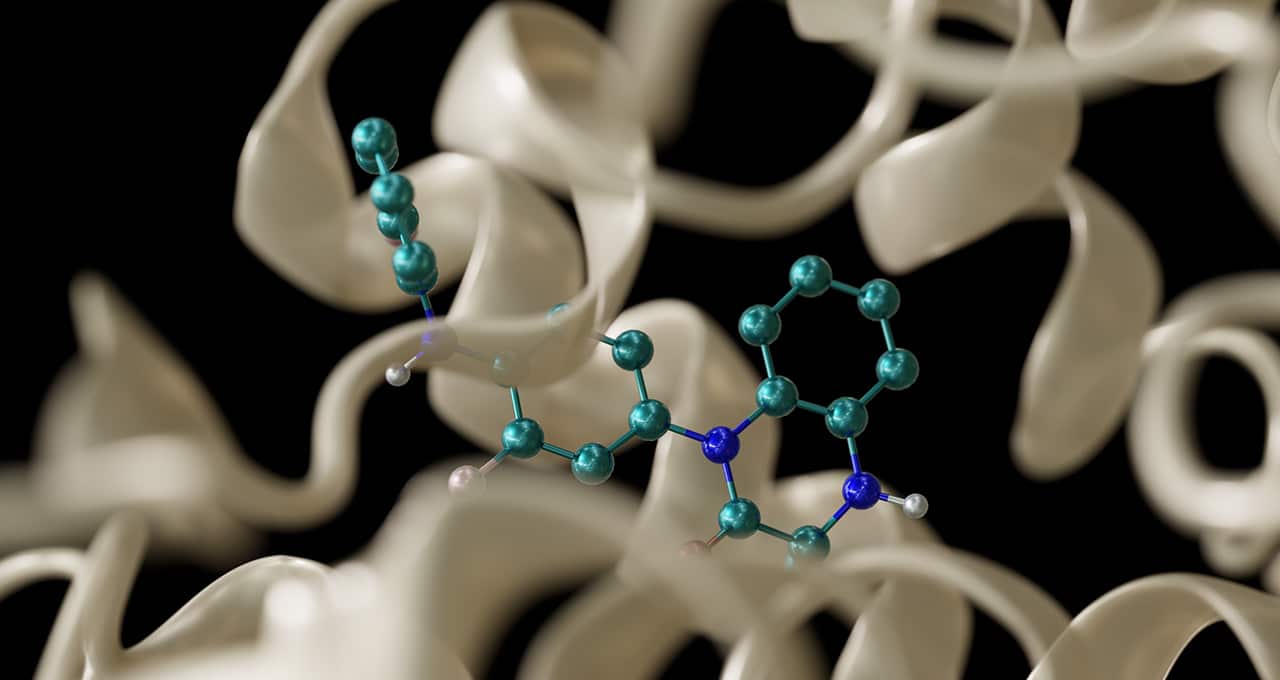Pharma and biology researchers developing the next generation of therapeutics can now take advantage of NVIDIA BioNeMo’s expanded generative AI toolkit, along with new ways to access its models.
The latest BioNeMo foundation models can analyze DNA sequences, predict how proteins will change shape in response to a drug molecule, and determine a cell’s function based on its RNA.
Models for accelerating protein structure prediction, generative chemistry and molecular docking prediction are now available as microservices through NVIDIA NIM, a collection of models for inference announced today at NVIDIA GTC — and available through the NVIDIA AI Enterprise platform.
BioNeMo models will soon be accessible on AWS HealthOmics, a purpose-built service that helps healthcare and life sciences organizations store, query and analyze biological data, including DNA and RNA.
With these capabilities, drug discovery teams can easily integrate generative AI into their workflows to better understand and design drug molecules virtually — and reduce the need for time- and resource-heavy physical experiments.
BioNeMo Expands to Foundation Models for Genomics, Protein Design
Among the new foundation models available in BioNeMo is its first genomics model, DNABERT. Trained on DNA sequences, the model can be used to predict the function of specific regions of the genome, analyze the effects of gene mutations and variants, and more.
A second model coming soon to BioNeMo, scBERT, is trained on data from single-cell RNA sequencing, enabling users to apply it to downstream tasks such as predicting the effects of gene knockouts — where a specific gene is removed or deactivated — or identifying cell types such as neurons, blood cells or muscle cells.
EquiDock, a third, joins a collection of BioNeMo models that can predict the 3D structure of how two proteins interact, which is critical to understanding if a drug molecule will be effective.
At Your Service: New Microservices Enable AI Insights
The NIM catalog of containerized AI microservices features more than two dozen healthcare models. Among them are DiffDock, which predicts the 3D structure of potential drug candidates and their protein candidates, and ESMFold, which can predict protein structure based on a single amino acid sequence.
Another NIM, MolMIM, generates drug candidates optimized for properties defined by the user — and is even able to design molecules that are optimized to bind to a specific protein target.
Developers can access production-grade NIM microservices through NVIDIA AI Enterprise using NVIDIA-Certified Systems on premises as well as leading cloud marketplaces, including Amazon Web Services (AWS), Google Cloud, Microsoft Azure and Oracle Cloud Infrastructure.
100+ Companies Integrate BioNeMo-Powered AI Into Drug Discovery Workflows
NVIDIA BioNeMo is being used by more than 100 companies worldwide, including:
- Astellas Pharma: The Tokyo-based company is using BioNeMo to accelerate molecular simulations and large language models for drug discovery applications. The company will use the Tokyo-1 AI supercomputer to further advance its work.
- Cadence: A leading developer of computation software, San Jose, Calif.-based Cadence is integrating BioNeMo microservices with its Orion platform to accelerate molecular simulation.
- Iambic: Based in San Diego, the drug discovery company has adopted BioNeMo and will contribute its NeuralPLexer model as a BioNeMo cloud API, or application programming interface, for noncommercial use, helping researchers predict how a protein’s 3D structure changes in response to a drug molecule.
- Insilico Medicine: A premier member of the NVIDIA Inception program for startups, New York City-based Insilico has integrated BioNeMo in its AI-accelerated drug discovery workflow, developing a pipeline of over 30 therapeutic assets — including six in clinical stages.
- Recursion: The Salt Lake City-based drug discovery company is a hosting partner offering its Phenom-Beta AI model through BioNeMo. The transformer model extracts insights from cellular microscopy images to help researchers better understand cell function.
- Terray Therapeutics: The biotech company, based in Southern California, is using BioNeMo to help develop a multi-target structural binding model — and is training generative AI models for small molecule design on NVIDIA DGX Cloud.
Discover the latest in AI and healthcare at GTC, a global AI conference running in San Jose, Calif., and online through Thursday, March 21. Tune in to a special address on generative AI in healthcare delivered by Kimberly Powell, vice president of healthcare at NVIDIA, on Tuesday at 8 a.m. PT.
Watch the GTC keynote address by NVIDIA founder and CEO Jensen Huang below:
